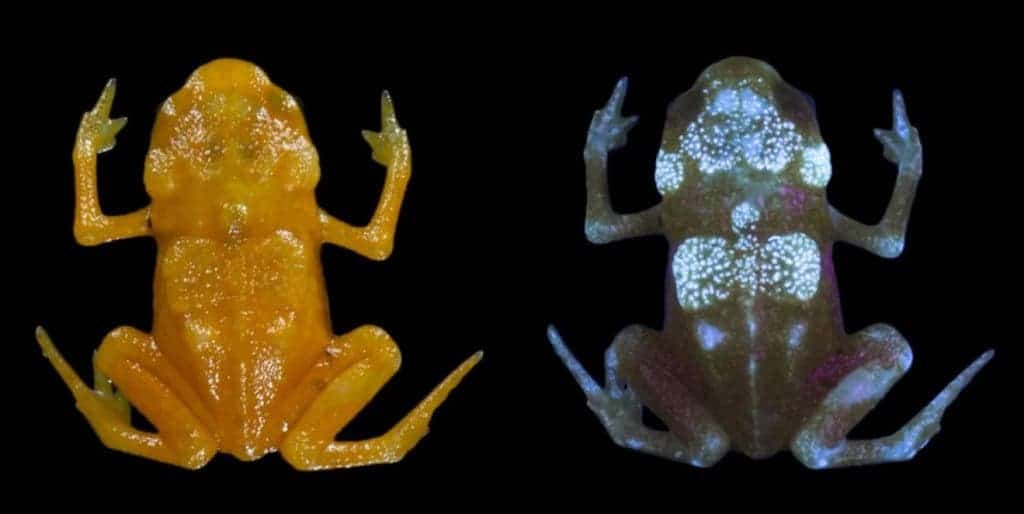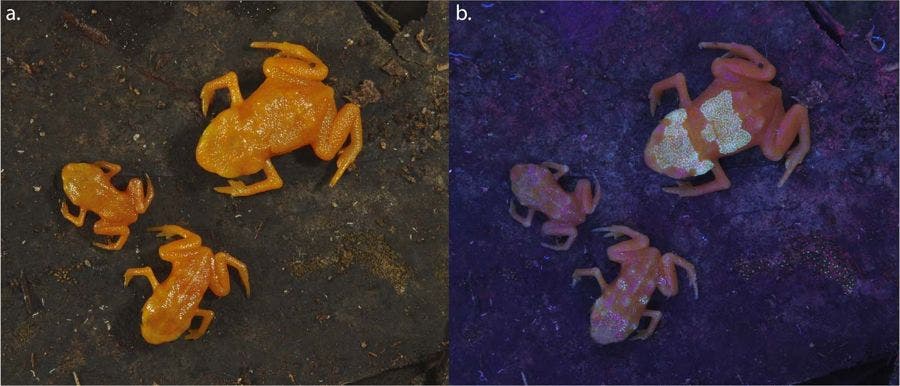A team of researchers studying the communication of certain frogs came across an unusual phenomenon: the frogs have a fluorescent skeleton.

Pumpkin toadlets are tiny, brightly-colored, and poisonous frogs endemic to the mountainous Brazilian Atlantic forests. They were only discovered a few years ago, but they are already threatened by habitat loss. In order to better understand how to aid them, researchers were studying the frogs’ behavior and mating habits.
During mating season, the toadlets spend most of their time looking for a mate. They literally scream it out, emitting loud mating calls in the hope that they will attract mates. But, sometimes, their calls go unheard, so researchers suspected they also have a fallback plan. When the team shone bright UV light on the frogs, they were surprised to see what this fallback plan is: the frogs have developed fluorescent patterns.
“The fluorescent patterns are only visible to the human eye under a UV lamp. In nature, if they were visible to other animals, they could be used as intra-specific communication signals or as reinforcement of their aposematic coloration, warning potential predators of their toxicity,” says Sandra Goutte, lead author of the new study.
Fluorescence in nature is well-known, although it remains quite rare. It’s a process in which an element absorbs external wavelength and then emits it back at a different wavelength.

There are many natural compounds that exhibit fluorescence but developing such a mechanism can be quite costly. In the case of the froglets, fluorescence is produced by bony plates lying directly beneath a very thin skin. In fact, the toadlet’s entire skeleton is highly fluorescent, but this is only visible where the skin is very thin (about seven micrometers thick). The lack of dark pigments in the frog’s skin allows light to pass through the bone, from which it is re-emitted.
Researchers also noted that the fluorescence is generated differently than in other frog species, and also forms specific patterns — which is also unique to this species.

Although the fluorescence is not visible to the human eye, it is presumably visible to other toads. Researchers also found that, in juveniles, the fluorescence is much weaker, only to become stronger in adulthood — further indicating that it plays a purpose in mating signals.
Journal Reference: Goutte et al. Intense bone fluorescence reveals hidden patterns in pumpkin toadlets. Scientific Reports, 2019; 9 (1) DOI: 10.1038/s41598-019-41959-8


